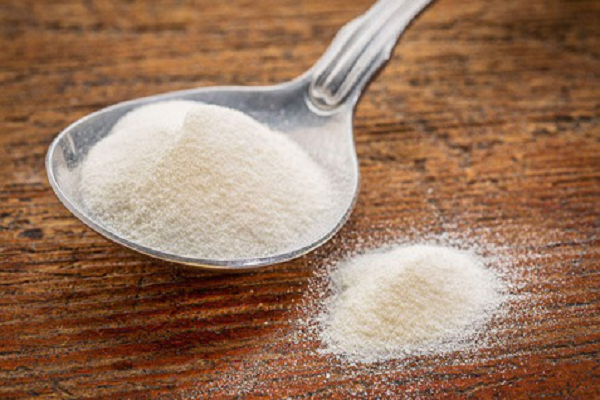In situ hybridization and immunohistochemical sP assay were used to detect the expression of PTEN mRNA and its protein in HCC.
Methods: 56 cases of hepatocellular carcinoma and 17 cases of cirrhosis were surgically removed. The specimens were fixed with 40g/L formalin, serial sections of 4 m thick, HE staining and pathological diagnosis.
Results: The positive expression rates of PTEN mRNA~ protein in HCC tissues were 62.5% and 71.4%, respectively. 17 cases of cirrhosis
Conclusion: There is a high proportion of PTEN mRNA and protein expression in HCC tissues, and the positive expression rate of PTEN mRNA and protein is the lowest in Hcc tissues with the highest degree of malignancy.
1 research objects and methods
2 results
The mRNA was localized to the cytoplasm, and the positive reaction product was light blue particles, and the PTEN mRNA positive cells were diffusely distributed. The expression of PTEN mRNA was positive in 3 normal liver tissues; the positive rate of PTEN mRNA expression was 88.2% (15/17) in 17 cases of cirrhosis, see Figure 1; PTEN mRNA in 21 cases of adjacent liver tissue The positive expression was 3, g~j90.5% (19/21), as shown in Figure 2; and the positive rate of PTEN mRNA expression in 56 HCC tissues was 62.5% (35/56), as shown in Figure 3. The expression of PTEN mRNA in paracancerous liver tissues and cirrhosis tissues was significantly higher than that in HCC tissues (P<0.05, Table 1). In 56 cases of HCC tissues, the expression of PTEN mRNA of grade I and II was significantly higher than that of grade III (P
2.2 Immunohistochemistry results
The PTEN protein is mainly localized in the cytoplasm, and the positive reaction product is brown or brownish yellow particles, which is diffusely distributed. The expression of PTEN protein in 3 normal liver tissues was strongly positive (+++); the positive rate of PTEN protein expression in cirrhotic tissues was 94.1% (16/17), mainly strong positive expression; 21 cases adjacent to cancer Liver tissues were strongly positive: the positive rate of PTEN protein expression in 56 HCC tissues was 71.4% (40/56) (Table 3), and the immune response was different. In some specimens, the positive signal was weak. . The positive expression rate of PTEN was significantly higher in paracancerous tissues and cirrhotic tissues than in HCC tissues (P<0.O1). In 6 HCC tissues, the positive rate of PTEN protein expression of grade I and II was significantly higher than that of grade III (P <0.05, Table 4), but there was no significant difference between grade I and II. The positive expression intensity of #hi and II PTEN proteins was significantly higher than that of grade III, mostly ++~+++, while in grade III tissues, PTEN staining was mostly weakly positive or negative.
3 Discussion
4 Conclusion
Collagen is a triple helical protein which can be considered as the bio-glue inside our body; in fact, animal glue can be obtained by boiling the animal skin. Collagen, a major component of connective tissues, exits in the extracellular space of these tissues which are the key reinforcing and bonding materials for all tissues and organs throughout our body, forming rigid structures as such bone, semi-rigid tissues such as cartilage, or soft tissues such as muscle, tendon, skin, ligaments, and cell membranes, etc. There are different forms (fibrillar and non- fibrillar) and types of collagens in the body; Type 1 being the major type constitutes over 90% in our body and is the major component in skin, tendon, vascular ligature, organs, bone (main component of the organic part of bone). Because collagen is an essential building material of all tissues and organs, it has many medical uses, such as in cardiac (hear) applications, cosmetic surgery, bone grafts, tissue regeneration, reconstructive surgical uses, and wound healing care.
Collagen is created inside fibroblast cells, and this process is needed to support the creation and repair of the body`s connective tissues. However, the biological process starts to breakdown when we are aging, normally after we reach the age of late 20s or early 30s. Because collagen from natural sources such as animal, fish scales or plant contain essentially the same amino acid compositions (glycine, proline, alanine, hydroxyproline, glutamic acid, arginine, aspartic acid, serine, lysine, leucine, valine, threonine, phenylalanine, isoleucine, etc.) as human collagen, supplement the body with the natural collagen, either by dermal application or through oral ingestion, can help rejuvenate collagen creation process to support the repairing of aging connective tissues in our body, particularly those in our skin, and to reverse or slow down the aging process for a more youthful appearance.


Collagen
Hydrolyzed Collagen,Fish Collagen,Collagen Food,Collagen Cosmetic
Nanjing Sunshine Biotech Co., Ltd , http://www.sunshine-bio.com